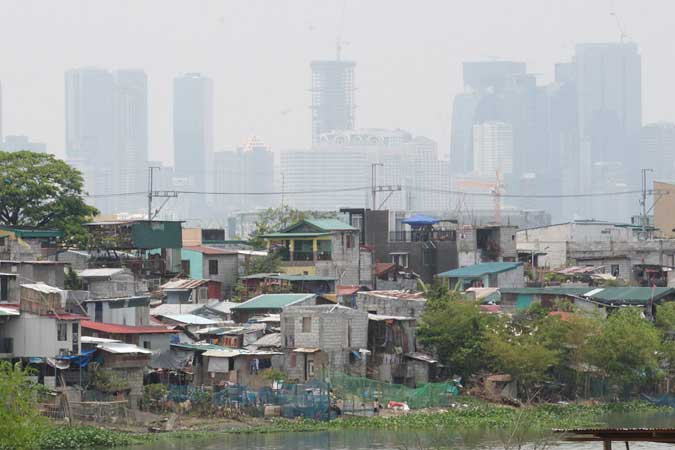IIF slashes 2021 growth forecast for Philippines

By Beatrice M. Laforga, Reporter
THE INSTITUTE of International Finance (IIF) slashed its growth forecast for the Philippines this year to 6.5% due to renewed lockdown measures imposed to curb a fresh wave of coronavirus cases and a slow mass vaccination program.
In its latest Macro Notes report, the IIF, a trade group representing financial institutions, cut its gross domestic product (GDP) projection for 2021 to 6.5% from 7.2% previously. If realized, this will hit the low-end of the Philippine government’s 6.5-7.5% target this year.
“I downgraded the Philippines for several reasons, as pandemic control is still a problem and lacking of vaccine supply sources,” Yuanliu Hu, associate economist at the IIF, said in an e-mail on Thursday.
“A new round of 1.5-month-long lockdowns in Q2 will (put a) damper (on) recovery hard,” he added.
The government reimposed strict lockdowns in Metro Manila and its nearby provinces from late-March until mid-May as a sudden spike in coronavirus disease 2019 (COVID-19) cases pushed the healthcare system to its limits.
On Thursday, the Health department reported 6,637 new COVID-19 cases in the country, bringing the number of active cases to 63,170.
Across ASEAN-5, the Philippines’ gross domestic product (GDP) growth is expected to be the second-fastest rate, along with Malaysia, and just behind Vietnam’s 6.7% projected growth. Indonesia’s GDP is estimated to grow by 4.7% while Thailand is expected to expand by 3%.
Despite the relatively high growth forecast, the IIF said the Philippines and Thailand will see slower recovery compared with the rest of the region, as both countries are likely to reach their pre-pandemic output levels by next year.
IIF said Indonesia, Malaysia, and Vietnam will see a return to their pre-crisis levels this year.
“The pandemic is still not under control in parts of the region, in particular Indonesia and the Philippines where infection levels remain elevated,” it said.
High infection rates meant lockdowns will likely be extended, economic activities will remain sluggish, and the tourism sector will not be able to bounce back, the IIF said.
The expected rebound in exports as the global economy recovers may not give the much-needed boost to the Philippine economy, since it is “relatively less integrated into the region’s supply chains compared to its peers,” according to the IIF.
The high inflation environment in the country also poses a risk to the recovery, as it limits the options of the central bank to bring down policy rates. The high prices of goods and services could continue to dampen household spending — a major growth driver.
“Finally, the elevated inflation will give no policy room for support and the central bank will have to think about normalizing or even tightening in the near future. The high inflation will also hurt the domestic consumption, which contributes to a large part of growth,” Mr. Hu said.
The IIF said inflation will likely start easing by the second half but the Bangko Sentral ng Pilipinas may no longer bring down benchmark interest rates further this year.
For next year, the IIF projected the Philippine economy will expand slower by 6%, which is far from the government’s 8-10% growth target.



